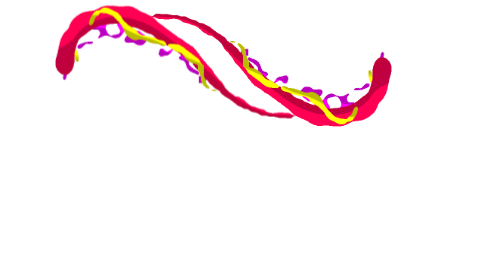Microsoft’s Jerry Nixon stated that Windows 10 was the final version of Windows just before the launch of the new operating system. This bold statement was bold and I cannot help but feel that Microsoft should have kept it. In the face of the faltering Windows 11 launch.
This quote was widely shared during the hyped build-up to the Sun Valley Windows 10 Update this year, and again after the launch of Windows 11. Panos Panay is the chief product officer at Windows.
When asked why Microsoft had changed its mind Pinoy said to The Independent, “I was asking that question earlier in the morning and I didn’t know.”
He explained that Windows was meant to be an innovation platform for customers.
That’s what Nixon meant by his constantly evolving ‘last version’ of Windows assertion. Yes, a bold statement, and one proven mostly inaccurate given the release of Windows 11, but it was reflective of the prevailing idea of the time, of Windows-as-a-service.
The idea was that version numbers should not be relevant to users, given the promise that a regular bi-annual upgrade process would keep this version of Windows at the forefront for innovation.
You can give me Windows. Windows is my favorite operating system. It doesn’t require a steadily increasing number of people behind it. Only a functional OS that can keep up with the times as promised.
I’ll give you one update in the spring and another, more feature-rich update in the fall. That’s what we expected to see on our desktops in October. We were to see a new Windows 10 code named Sun Valley. This major feature update would bring new functionality to the Xbox Series X and a new look to the old OS.
This would have proved Windows-as-a-service to be a success, as Windows 10’s modular design would allow it to deliver all the benefits of a whole new operating platform without the hassles of installing and launching a new OS.
It’s great news for Microsoft and users. But, you know what it’s not great for? People who are looking to sell new systems to punters. Although I don’t believe that the Sun Valley update was the sole reason why we had the Sun Valley update become a new OS, I do know that there were conversations about it.
It’s not as easy to shift a new laptop around marketing it around an OS update. “Here’s HP Envy with Windows 10 update 21H2” doesn’t have quite the same appeal as “New HP Envy With Windows 11”.
Microsoft executives will have looked at the work of the Sun Valley Windows 10 update design project leaders and decided that it didn’t look like Windows 10. The whole fat-cat cartoon schtick is triggered by a lightbulb moment.
“Why don’t you sell this whole new …’?
Windows 11 was born. Ok, there were likely more factors involved than just being able to cull promised support for lots of old PCs. But you get the idea.
Microsoft could have saved itself and us a lot of trouble if it had not succumbed to the temptation of big launches, sales of new products, or tons of media about a purported OS. And negative column inches, too.
Look at the mess it has made of Windows 11 thus far. New security requirements were announced as the minimum requirement to upgrade to the new OS. As Microsoft seemed to be releasing different messages almost every day regarding its sudden affection for TPM 2.0, confusion reigned.
It seemed that there were a lot of hardware issues that could have run an updated Windows 10 and that are now being blocked by Windows 11.
They aren’t locked out. Despite Microsoft’s threats to jealously hold back updates for chips not on its list, has happily installed on systems that have processors below the minimum requirements grid. Even single-core Pentium4 chips are reported to have been installed.
The confusion does not end there. Microsoft has published its guidelines on how to bypass its minimum requirements checks to install Windows 11. Even though it doubled down on them and claimed that the system specs would allow for an OS that would be 99.8% free from crashes.
It’s also sad to say that Windows 11 is still missing some of its most exciting features. Yes, we have AutoHDR for all the HDR gaming on the PC, but where is DirectStorage??? This API is supposed to make SSDs more important for PC gaming. However, it’s still in developer limbo without any hint as to when it will be used.
Also, where is my latest version of Paint?
Some of the most fundamental parts of Windows have been removed from the new OS without good reason. For example, the ability to move the taskbar around or the absence of shortcuts. Even though still there are a few settings screens that appear to date back to Windows 2000.
It is frustrating because I love Windows 11. It’s frustrating because I love Windows 11. It keeps making random noises of the USB disconnected noise.
Windows 11 is a great OS. However, I would prefer it if it was an update. It would have been much easier to avoid some of the negative press surrounding the new OS if it was a free update.
It is acceptable to push back features in an update. It feels a little sloppy to leave features out of a new launch.
Microsoft will still release Windows 11 as an upgrade for Windows 10 users. This will make it almost the same experience as to how it would have been if it was a simple feature update for people with compatible systems. After clicking on the Windows Update button, we will see a new UI, with a central taskbar and a few additional features… as well as missing ones.
If the experience is the same, then why am I so upset?
It all feels so unnecessary and is a way to sell more laptops and give up support for older hardware. This is not a bright future for PC gaming’s most popular operating system.
Microsoft’s OS is up against a lot of competition, especially in a world where SteamOS might be able to compete with Windows. This is due to its primary position in the Steam Deck. There is also something to be concerned about.

